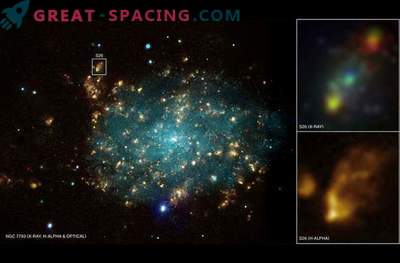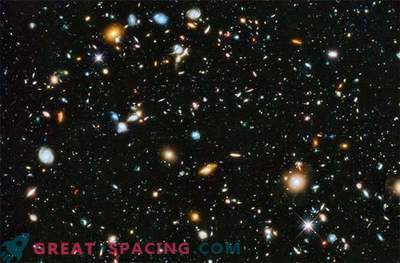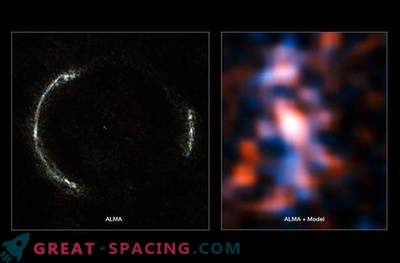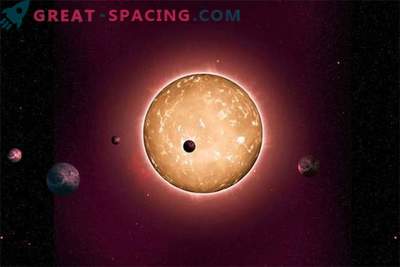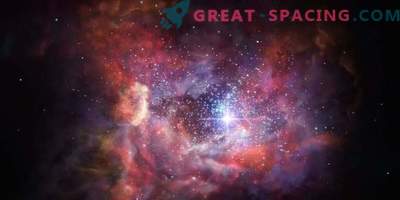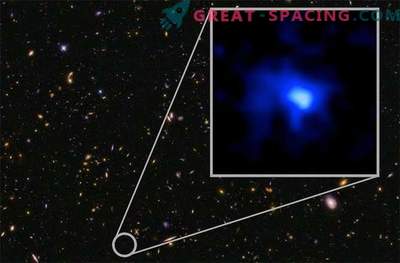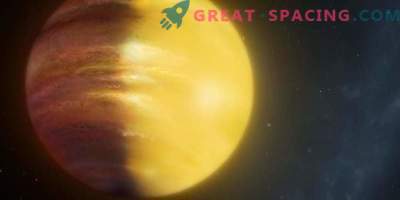The Hubble Space Telescope provides the widest range of possibilities for astronomical and astrophysical research. Among them are observations of planets, moons, small ice bodies in the Solar system and beyond, as well as the study of the cosmological history of the Universe. We present you some of the greatest discoveries of Hubble.
At the moment, about 13 thousand scientists have already published the results of research conducted using Hubble. Of these, one study was even awarded the 2011 Nobel Prize in Physics. It was conducted by astrophysicists Sol Perlmutter from the NASA Center for Space Flight. Goddard, Brian Schmid of the Australian National University and Adam Riess of the John Hopkins University. Together they found that the rate of expansion of the universe is constantly increasing.
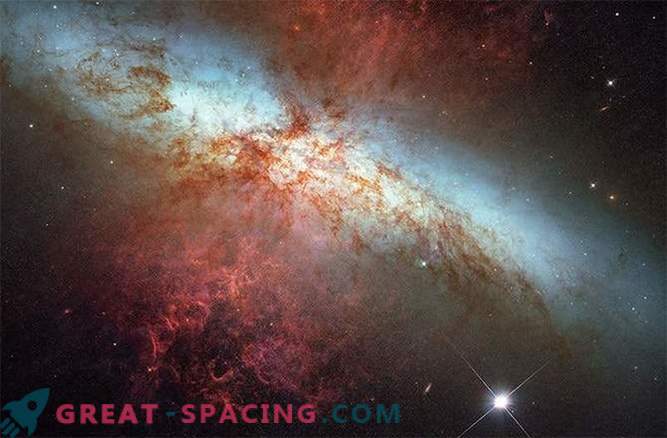
This composite image of the SN 2014J supernova explosion in the galaxy M82 is made using the Hubble Space Telescope. This star shares with the Earth about 11.5 million light years, which makes it one of the closest objects of this type to our planet discovered in recent decades.
Another inexplicable phenomenon is dark energy, which can be compared to a ball throw, as a result of which it quickly picks up speed and continues to move forward. Scientists have used the Hubble and a number of ground-based telescopes to determine the type of an exploding star. From now on, the supernova will serve as a criterion for determining the distance of other objects.
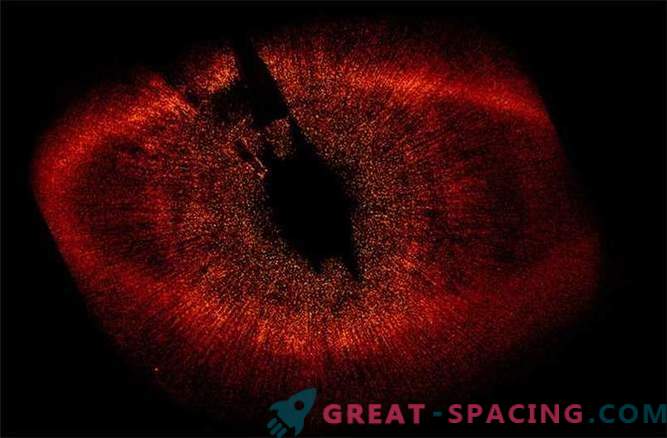
This image was taken with an upgraded survey camera aboard the Hubble Space Telescope. It can see the recently discovered planet Fomalgaut B, which revolves around the parent star Fomalgaut.
This line of research outside the solar system has not even existed when Hubble was launched into outer space 25 years ago. The first exoplanet was discovered by astronomers in 1992. And in 2008, exactly one year before the start of the NASA Kepler Planet Hunter, designed to look for a planet similar to Earth among distant stars, Hubble took the first picture of the planet outside the solar system.
Fomalgaut B - exoplanet orbiting the star Fomalgaut, which is located 25 light-years from Earth in the constellation Southern Fish. Its mass does not exceed three masses of Jupiter. Astronomers saw it as a dust ring with a precise light source, which lies 1800000000 miles from the inner edge of the ring.
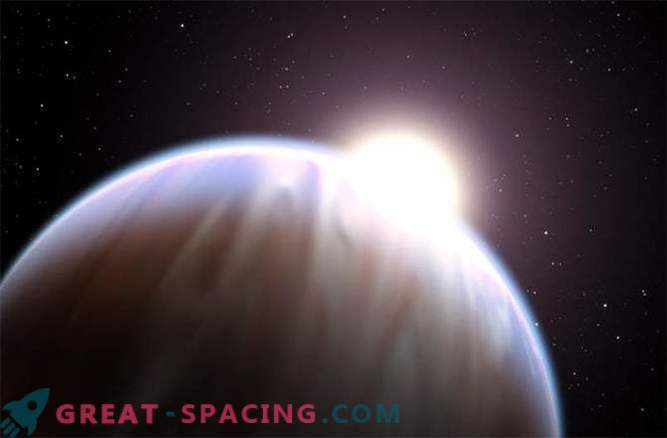
In this picture you can see the exoplanet HD 189733b with its parent star, looking out over the top edge of the planet. Using the Hubble Space Telescope, astronomers have discovered water vapor and methane in the atmosphere of a planet the size of Jupiter.
The search for planets outside the solar system is perfectly motivated by the eternal question of whether life exists outside the globe. The same motivation inspired scientists who conducted robotized studies of Mars and radio wave monitoring for signs of extraterrestrial intelligence.
NASA Kepler has already found thousands of planets at the time of their passage between the parent stars and the telescope lens. Hubble scientists used the so-called transit method, which consists in analyzing starlight shining through the planet's atmosphere. At the moment, organic molecules, carbon dioxide and water vapor have been found in the atmospheres of exoplanets.

This is a black hole, the size of which is a hundred million times the size of our Sun. It hides in the very heart of the spiral galaxy M31, which is known as the Andromeda Galaxy. The so-called event horizon (the region around the black hole, where there is practically no light), is extremely small to be visualized even with a powerful telescope. The black hole is located in the central part of the compact cluster of blue stars, which can be seen in the image.
Until now, there is no real method to detect black holes, because they have an enormous gravitational force that absorbs even the photons of light. However, they leave a clear mark on the stars, clouds of dust and gas that they encounter and absorb. Hubble is able to visualize the movement of dust clouds and stars in the centers of galaxies, so it can collect enough evidence of the existence of black holes in any part of the Universe, including the Milky Way galaxy. Astronomers believe that black holes have grown with galaxies, although the essence of this process still remains a mystery.
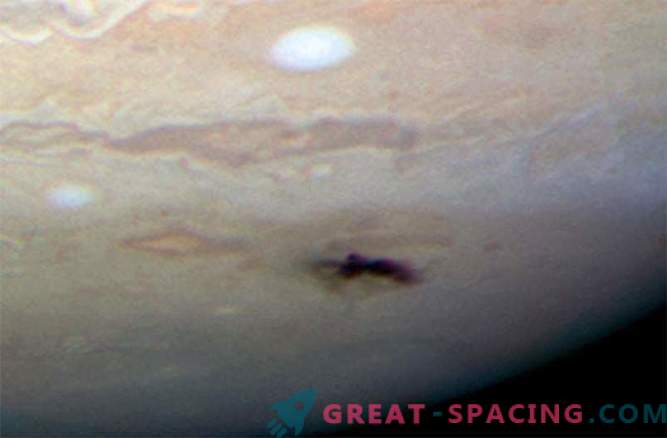
A new dark spot on Jupiter was recorded by Hubble on July 23, 2009.
At the height of the Hubble test after the fifth and last shuttle service in 2009, astronomers discovered a new spot on Jupiter, changing its size from day to day. This discovery was made using ground-based telescopes, and Hubble continued to explore the new phenomenon. It is assumed that the dark spot was formed as a result of the collision of the planet with an asteroid or comet.
Hubble sent a special camera to the gas giant, whose field of view covers an area of 360,000,000 km. This was the second round of the study of Jupiter. 15 years ago, Hubble photographed clouds in the atmosphere of Jupiter 90 minutes after the first collision with fragments of Comet Shoemaker-Levy. At that time, astronomers thought that such a chance was given only once in a lifetime.
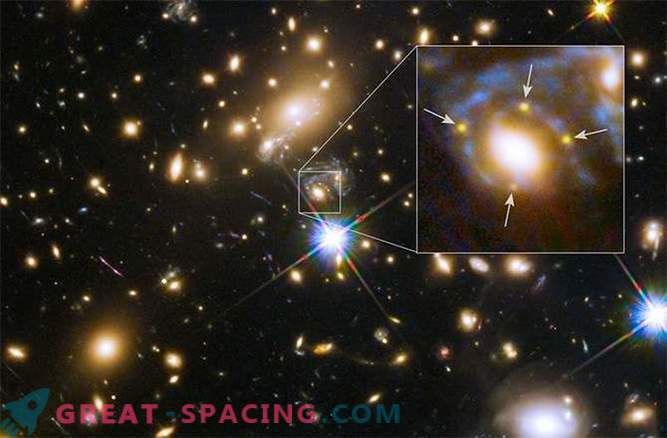
The massive clusters of galaxies MACS J1149.6 + 2223 are located 5 billion light-years from Earth.
One of the latest discoveries of Hubble may be its most unusual achievement. This is the image of a supernova in the spiral arm of the galaxy, which is located 9300000000 light years from Earth. It is far beyond the usual Hubble range, but the telescope could take a helping hand from Mother Nature itself.
Using natural lenses in space, created by gravity and a cluster of galaxies, astronomers were able to expand the field of view of the universe. Accumulations distort the trajectory of the reflected light, creating some mirrors in space. This gives a multi-level image of distant objects, since streams of light from different sides envelop the lensed region of outer space.
